Links:
IranVisitor.com
Blogs:
Bazaar Dispatch
Iran News Blog
Iran Travel & Tourism
Tools:
Calendar Converter

|
By: Bijan M. Sadeghi |
|
Yazd: |
The city of Yazd first mention in historic records predate it back to around 3000 years B.C. when it was related to by the name of Ysatis, and was then part of the domain of Medes, an ancient settler of Iran. The city of Yazd is located in the eastern part of central Iran situated on the high, desert plateau that forms much of the country. Amidst the immense desert, Yazd retains its sterling of old in religion, traditions and architecture. In the course of history due to its distance from important capitals and its harsh natural surrounding, Yazd remained immune to major troops' movements and destruction from wars, therefore it kept many of its traditions, city forms and architecture until recent times. During the invasion of Genghis Khan in the early 1200 A.D. Yazd became a safe haven and home for many artists, intellectuals and scientists fleeing their war ravaged cities around Persia.
Yazd was visited by Marco Polo in 1272, who described it as a good and noble city and remarked its silk production. Isolated from any approach by a huge tract of monotonous desert, the vibrancy of Yard is invariably a surprise.
The word Yazd means, feast and worship, The city of Yazd has resisted the modern urbanization changes and maintained its traditional structure. The geographical features of this region have made people developed special architectural styles. For this reason, in the older part of the city most houses are built of mud-bricks and have domed roofs. These materials served as insulation preventing heat from passing through. The existence of special ventilation structures, called Badgir, on the roofs is a distinctive feature of the architecture of this city (A Badgir is a high structure on the roof under which, in the interior of the building, there is a small pool). Therefore, Yazd has presented its stable identity at the foothills of the 4000 meter Shir Kooh.
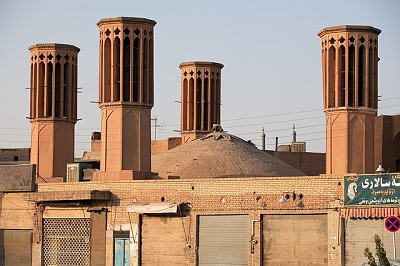
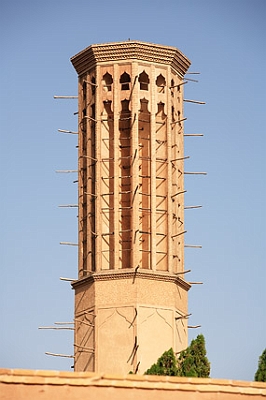
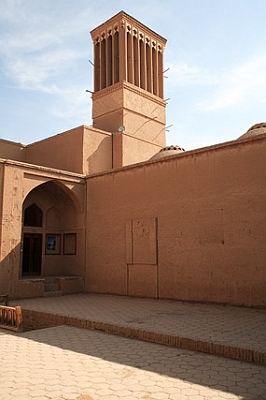
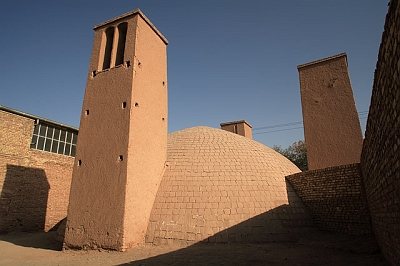
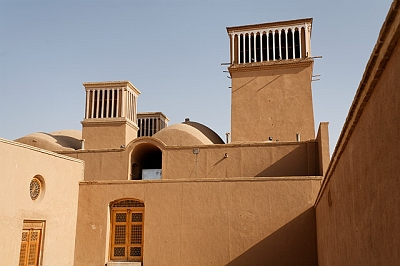
Tekieh e Amir Chakhmagh is often described as the entrance to a now non-existent bazaar. The chief function of this building and the square before it, was to host the Taziyeh, a cycle of passion plays commemorating the martyrdom of the third Imam, Hossein, which take place once a year during the mourning month of Moharram. The site dates from the fifteenth century arid the efforts of its eponymous builder, Amir Jalal Al-Din Chakhmagh, governor of Yard. However, what remains to be seen today is this nineteenth century tiled portal, built as a grandstand from which the plays could be watched.
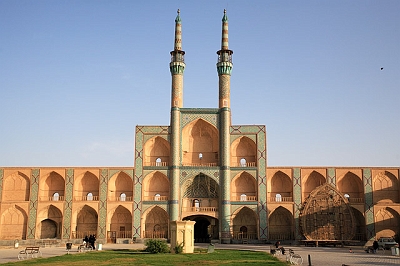
The mosque of Mir Chaqmaq, also referred to as the Masjid-e Nau, was one of the first constructions in a larger institutional complex consisting of a madrasa (theological school), khanqah (a hostel for sufis or dervishes), caravanserai (travelers inn), qanat and ab anbars (subterranean canal and water cistern), public baths, meidan or public square and bazaar sharing the name.
The Jame Mosque (Friday Mosque) crowned by a pair of minarets, the highest in Persia, the portal's facade is decorated from top to bottom in dazzling tile work, predominantly blue in color. Within there is a long arcaded court where, behind a deep-set south-east Ivan, is a sanctuary chamber. This chamber, under a squat tiled dome, is exquisitely decorated with faience mosaic: its tall faience Mihrab, dated 1365, is one of the finest of its kind in existence. The Mosque was largely rebuilt between 1324 and 1365, and is one of the outstanding 14th century buildings in Persia. The tile work has recently been skilfully restored and a modern library built to house the mosque's valuable collection of books and manuscripts.
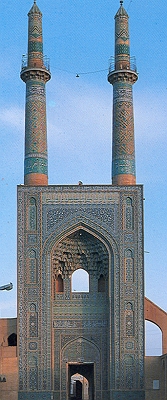
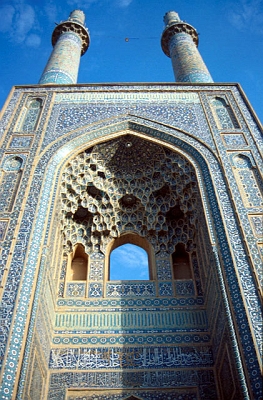
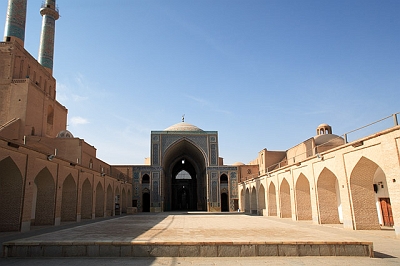
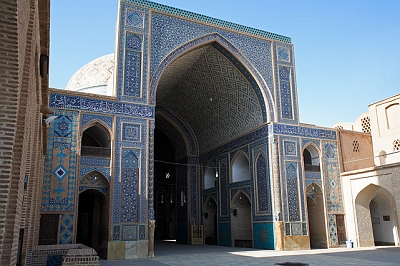
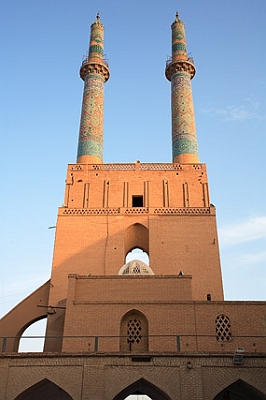
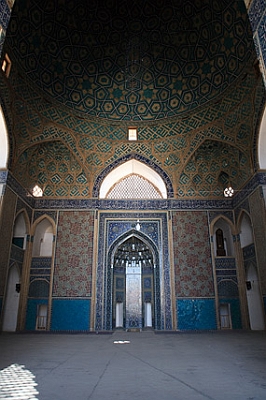
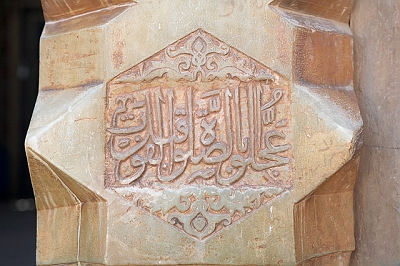
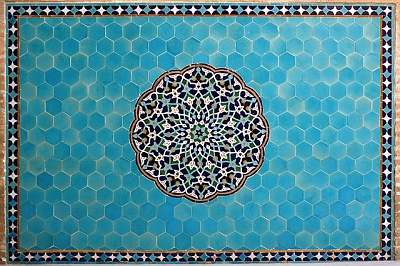
Zoroastrians have always been populous in Yazd. Even now roughly ten percent of the town's population adhere to this ancient religion, and though their Atashkadeh (Fire Temple) was turned into a mosque when Arabs invaded Iran, a dignified new fire temple was inaugurated thirteen hundred years later.
This Atashkadeh (Fire Temple) initiates meet there, but nobody apart form the Moubad (Grand Priest), a descendant of the Magi, reciting the Avesta, has access to the Moubad-e Moubadan (Saint of Saints) where for the past 3000 years a fire burns in a brazen vessel. The fire itself is a representation of what is good.
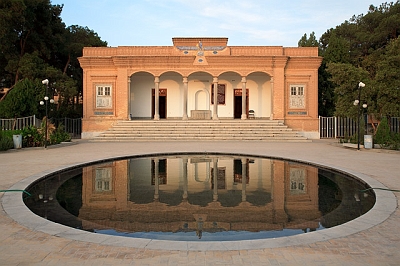
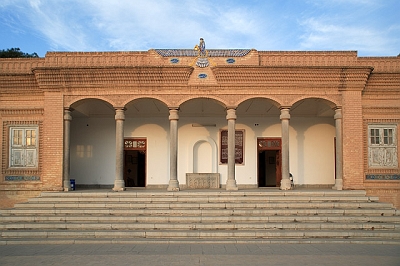
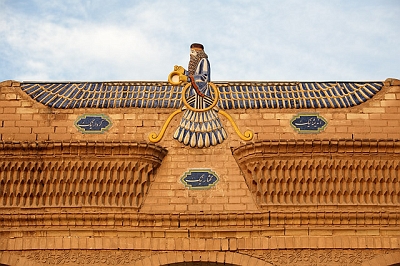
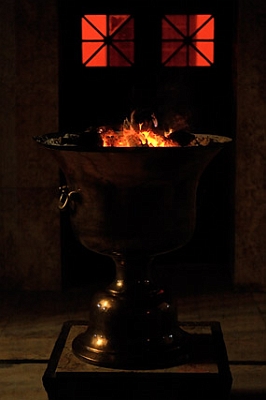
Comprising a large garden and some buildings, the "Dowlat abad" Garden is a famous complex built in the original Iranian style which was watered by a qanat of the same name. In the past, it was the residence of the governor. The most impressive part of this complex is the main building, that is an example of Outward-Looking houses in Yazd, with a complete ventilation system.
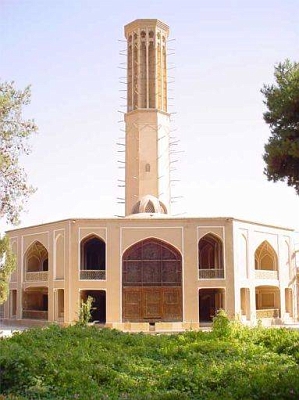
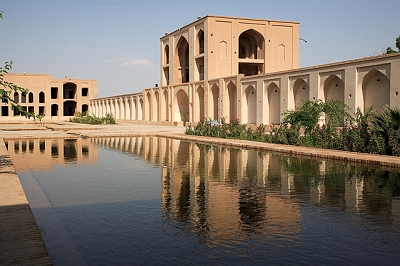
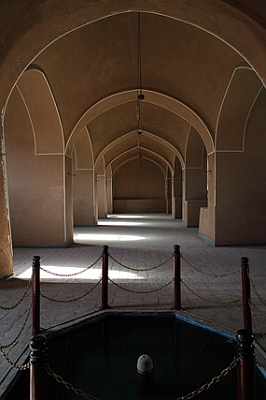
Sayyid Rukn ad-din commissioned a complex of structures in Yazd including a mosque, library, madrasa and mausoleum, to form the Muasasa Vaqt u Sa'at: the 'Institute of Time and the Hour'. The interior of the tomb is completely coated with white plaster, profusely decorated with designs painted, stenciled, or in low relief stucco carving. The dome features a central sunburst-type design created by radial foliage; radiating out from the center are large escutcheons of alternating Naskh and Kufi text. The double layer of squelches within the zone of transition also display Kufi text formed into unusual designs.Bogheh-ye Seyed Roknaddin
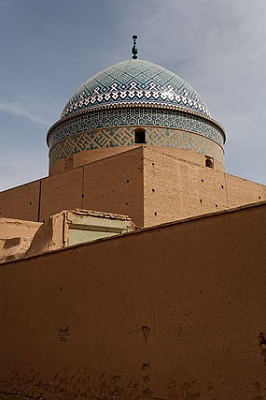
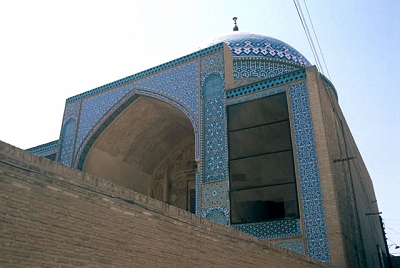
Hazireh Mosque is one of the most famous buildings in Yazd.
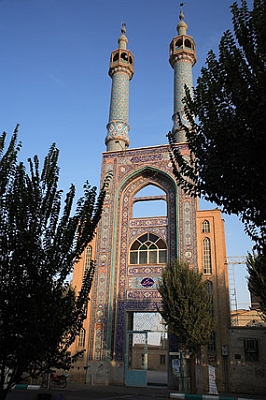
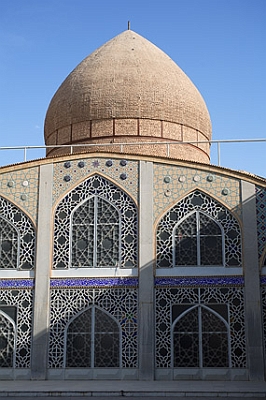
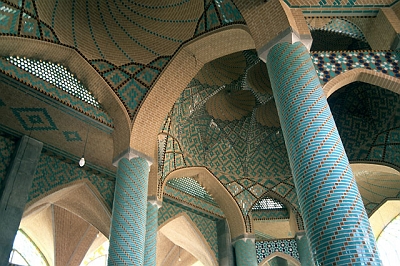
Alexander Prison was built by Alexander, the Great. When Alexander the Great ruled over Persia some Iranian elite protested and were arrested. It is said that when Alexander passed through Yazd he imprisoned them in a dungeon, a deep well, now in the courtyard of a school from the 15th century. If this is true or not have been debated.

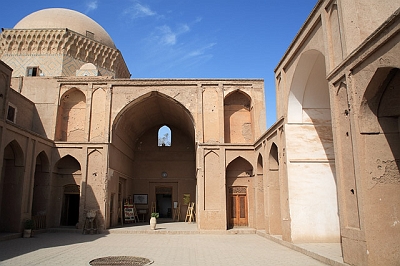
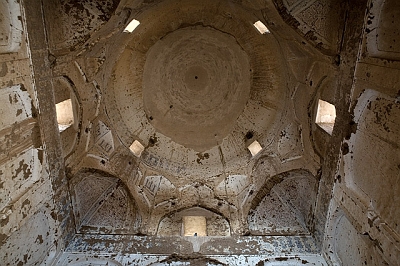
Very near Alexander's Prison is the Tomb of the 12 Imams. It is a building from 1038 with a brick dome (an early good example of its kind). Inside there are some fine plasterwork and inscriptions with the names of the 12 Shiite Imams, but none of them are buried here.
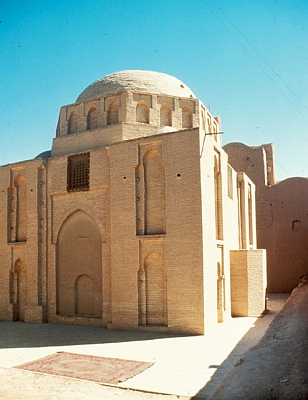
The city walls of Yazd are one of the finest expressions of a vital tradition of military architecture in Central Iran, witnessed in varying scale from fortified villages, road outposts, provincial castles, imperial citadels to ramparts enclosing entire cities.
A wealthy merchant family, the Lari's sold their courtyard house to the government. The Iranian Cultural Heritage Organization recently completed restoration work and opened it to the public.
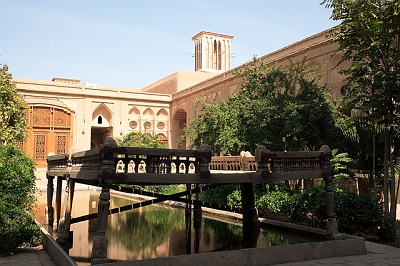
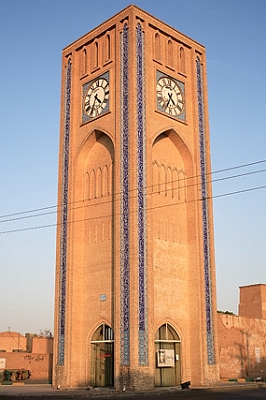
Being located beside the central mountains, far from the sea, adjacent to the kavir and in the shadow rainy region, Yazd has a climate which mostly resembles dry desertic climate. Little rain along with high water evaporation, relatively low dampness, heat and great temperature changes are among the factors making this province, one of the driest parts of Iran. The only moderating climatic factor is height and so, there is a pleasant climate dominant in Shirkuh heights.
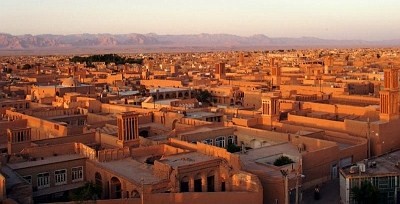
God Bless Yazd!
Your Comment: |
|
| Rate : | |
| Name : | *Required |
| Email : | *Confidential |
| Comment : | |
 |
|